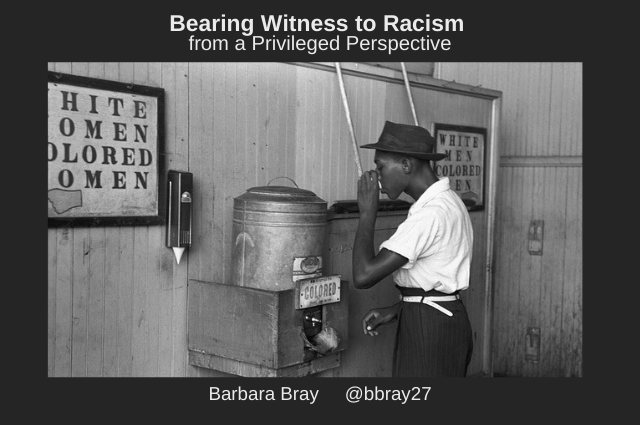
Image by WikiImages from Pixabay
I was raised in the 50s and 60s in Silver Spring, Maryland. I’m white and everyone around me was white. That was normal for me.
I thought being in Maryland outside of D.C. was an exciting place to grow up. Through my own experiences and what I’ve learned about deed covenants, I am becoming more aware of what was responsible for controversial issues happening today around voting suppression, bans on books, and inequities that have always been there. There are Photographs that Tell a Story by Elliot Erwitt from this period and images from events in some of the articles I reference in this post including a painting by my mom.
I didn’t have all the information about segregation, how it was planned, and how the history of people of color was erased. I decided to do research and that’s when I found out about the deed covenants that restricted certain people from living in Silver Spring. I found interesting facts in the Columbia College of Arts and Science History News Report: Silver Spring, Maryland Has Whitewashed Its Past and A Little Silver Spring History both by David S. Rotenstein. The first restrictive covenants attached to properties in Silver Spring were included in deeds executed by Virginia attorney and real estate speculator Robert Holt Easley (1856–1941).
Silver Spring, an unincorporated place in Montgomery County adjacent to the District of Columbia’s northern boundary, excluded African Americans through racially restrictive deed covenants. Silver Spring was a strictly segregated Southern town that vigorously resisted integration well into the 1960s. African-Americans could not live in Silver Spring but they could be domestic workers and built the homes that they could not buy.
I was unaware that I grew up part of this intentional divide. One of the places where I lived was next to Rock Creek Park [map]. In my first-grade class picture, I can see that everyone was white. All the teachers and the principal and the other staff were white. In fact, everyone was white in most of my schools K-12. Growing up I didn’t know anything different and thought that was what it was supposed to be like. Rotenstein shares his story of living in Silver Spring, MD in his 2017 article and mentioned how people of color were being erased from history.
The ways in which history and historic preservation are produced in Silver Spring effectively reproduce the exclusion of people of color from earlier periods by rendering them invisible in published histories, designated historic properties, and heritage-themed placemaking.
Prior to 1950, Silver Spring was what’s known as a sundown suburb, a term used to describe cities or communities, where an all-white municipality enforced Jim Crow rules to restrict non-whites from living and accessing the town. Silver Spring, being an unincorporated area never held established municipal boundaries, so its suburban development was often left unplanned and in the hands of influential landowners.
Sometimes you can have things happening around you that impact you but are not aware of why or what was happening like the Jim Crow rules and forced segregation. I was pretty young when the world changed for our family in 1952. My dad was accused of harboring connections to communists during the McCarthy hearings. He wasn’t a communist, just accused. He ended up demoted and had to look for another job. My mom got a job while my dad was looking for work. She needed help and hired Pearl who then lived with us. Pearl had her own large family and was like our second mom. Later, Lavinia helped us after Pearl because my mom continued working. My mom’s amazing life is going to be another story.
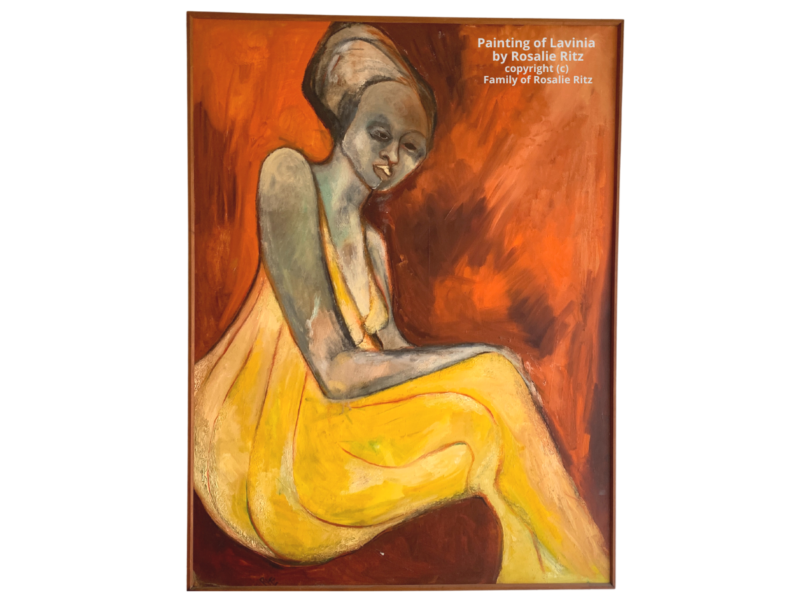
Oil Painting of Lavinia by Rosalie Ritz (c) Family of Rosalie Ritz
We will always remember Lavinia because my mom painted a picture of her depicted above. I found this ArcGis Story Map of Silver Spring that showed me where Pearl and Lavinia lived in Lyttonsville; an area contaminated with lead and other harmful substances. According to the Story Map,
Not only was housing in Silver Spring extremely limited to Blacks, but historically African American towns like Lyttonsville were also sites the County rezoned for hazardous industrial uses between the 1940s and 1960s, often displacing or otherwise harming residents.
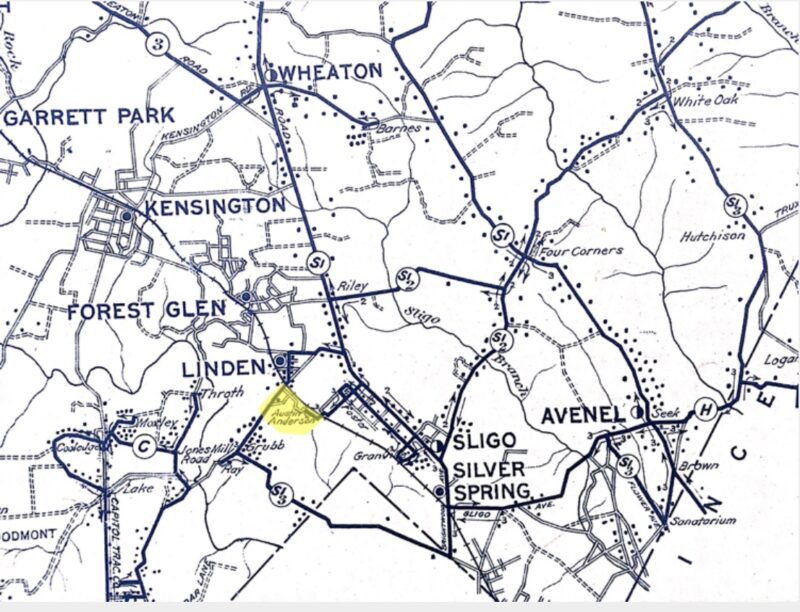
The early history of Lyttonsville started when Samuel Lytton bought some property in 1853 with varying information that it was a “pre-Civil War free black settlement.” [Source: An Early History of Lytonnsville, Maryland]
No one in my circles in Silver Spring ever talked about racism, the separate sinks, the separate toilets, or why we lived where we lived. We never knew or talked about where Pearl and Lavinia lived. We had domestic workers like other white families. We didn’t question why helping us was the only job available for Pearl and Lavinia. Pearl told me one day that it was her birthday and to keep it quiet. That same day, I saw on television police using fire hoses on people who could have been Pearl’s family. I wanted to talk to her about it but she kept everything to herself.
One evening when I was 12, my mom was driving home with me in the front seat and my sisters in the back. We were driving by Glen Echo Park and came across a large group of people walking toward us. Many were holding signs. Police were yelling at us to move. The next thing that happened was a rock or some type of projectile hit and shattered our windshield, but we were okay. Police came over and yelled at us to get the HELL out of there NOW. So my mom got out of there fast. When I looked across the street, I saw people protesting with signs with Nazi symbols. I found out later that this started as a peaceful protest that became violent. Here is a PDF of the “Summer of Change: The Civil Rights Story of Glen Echo Park.”
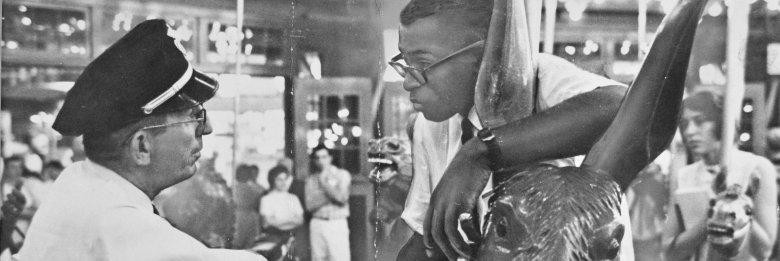
I knew about protest marches but was never close to one before especially one that was violent. Every day I looked for information in the paper or on the news about Glen Echo and there was nothing. On the news, I saw the protest marches, the lunch counter-protests, and more, but none of this was talked about in schools or why people were protesting about Glen Echo’s policies. I followed the civil rights movement when I could and found this article about the Contradictions in the cause of Glen Echo Park protest in 1960.
I was excited that John F. Kennedy was going to be president and went to the inauguration on January 20, 1961. It was a proud moment for me, even though it was snowing and cold with freezing winds. I bundled up and wouldn’t have traded that moment for anything.
When I was 15, I was in the march on Washington, D.C. in August 1963 and heard Martin Luther King, Jr.’s “I Have a Dream” speech. I was impressed with all the speakers and singers. I couldn’t hear everything but I knew being there was historical. I was way back near the Washington Monument and will always remember that day. I didn’t realize then how privileged I was to be there. Yet, it didn’t change where I lived, who I was friends with, or what school I went to. It did impact me and made me curious about what was happening. None of this was talked about in school.
In November that year, President Kennedy was assassinated. I was there at the funeral procession. We did talk about his life and what happened at home and in school. The Civil Rights Act was passed in 1965. We did talk about that, but little changed around me, except there were no more separate sinks and toilets.
The day after I graduated from Walter Johnson High School, my family moved to California to Walnut Creek, a suburban city in the San Francisco Bay Area. If you could afford to live in certain areas, you could move there. That is, if you were able to buy a home in a certain neighborhood. I was starting to see that even though there were Federal policies to enforce “integration,” there were segregated communities. Walnut Creek and other suburban cities were all white. If you wanted to know where African-Americans lived, you went to Pittsburg, Richmond, East Palo Alto, or Oakland.
Discriminatory policies were everywhere, all across America. Check out this article on How Real Estate Segregated America.
I did some research to see if there were deed covenants in the Bay Area and I found this article in the Mercury Times about these discriminatory policies in the Bay area: Shocking language found in property docs throughout Bay Area. Here is a thorough report on these policies published by the Haas Institute for a Fair and Inclusive Society at UC Berkeley called Roots, Race, & Place: A History of Racially Exclusionary Housing in the San Francisco Bay Area.
“This report documents the multifaceted tactics for racial exclusion and dispossession in housing that changed over time and were carried out by various public institutions, business interests, and networks. Understanding the history of how these tactics functioned is essential to dismantling their legacies in the future.”
There is a timeline in the report of racially exclusive practices in the Bay Area that went from 1880 to 1968, specifically deed restrictions prohibiting the sale or lease of homes to specific racial groups; bylaws restricting HOA membership by race. The report goes into detail about the origins of racial exclusion in housing as a systemic process fundamentally tied to the control of land and the power to decide who can call a place home. The California Real Estate Association (CREA) set standards for segregation in its buying and selling policies as for “whites only.” The outcomes of racial steering, blockbusting, and other tactics were starkly evident in many areas of the region in the 1960s. [Source: Roots, Race, & Place:]
Systemic racism has always been here and was perpetuated with deed covenants. The same deed covenants in Silver Spring and the SF Bay Area were in cities all over the United States. According to Robin DiAngelo in her book White Fragility,
“A racism-free upbringing is not possible, because racism is a societal system embedded in the culture and its institutions.”
I thought of the covenant from Silver Spring realtors and how realtors intentionally segregated communities of color right here in the Bay Area. I got married and lived in a one-bedroom apartment close to Cal State East Bay in Hayward that was on the other side of the hill only 20 minutes away from Walnut Creek. This side of the hill was more diverse. After five years, we moved to Oakland to a home and neighborhood we love and still live there 46 years later.
It costs so much to live in California and many places in the U.S. More and more people do not have a safety net. It takes one medical emergency like COVID, a wildfire, an earthquake, a hurricane, a flood, or losing a job that can cause people to lose their homes. The homeless could be us at any time. Here’s an interesting article about trying to buy a home now in the Bay Area. Why Buying a Home Today is So Much Harder than in 1950. We do need to focus on the causes of poverty and design solutions to end poverty. Racism is a major factor in causing poverty and the inability to rise out of poverty.
Kimberlé Williams Crenshaw, a law professor at the U.C.L.A. School of Law and Columbia Law School, is credited with coining the term “Critical Race Theory” (CRT) in 2018, which is mainly concerned with institutions and systems. Right now, there are state policies banning CRT in schools. This started after protests over the police killing of George Floyd, when critics of CRT framed it as shaming, accusatory, and divisive. This was followed by an executive order barring any training that suggested the United States was fundamentally racist. The order was rescinded. [Source: Critical Race Theory: A Brief History]
CRT reminds me of the Deed Covenant, which was a strategy for realtors to control where people of color or certain religions or gender preferences could live or not live. The covenant was created out of fear that “people of color” or those who were “different” would change the neighborhood. The fear and lies changed policy. Banning books and the teaching of what happened in history is another way to push fear and lies to scare parents and voters. Teachers and school boards are under attack for teaching the truth about history.
If you lie enough to people and they never have access to what really happened, they’ll believe what they are told and spread the lies.
All of us need to rethink our biases and privilege. The pandemic has exposed the inequities that have always been there, including the policies that continue to segregate communities and suppress voting, especially in marginalized communities. We have to have these talks about racism and implicit bias to develop the skills to challenge the system that is protecting discriminatory policies and actions. Teaching WHY we are where we are now is important. Doing the research I did helped me understand why my privilege blinded me from what was happening around me. History is more than dates of events or knowing state capitals. History is about stories, culture, and listening to the legacies of all of our ancestors.
I’m reading and learning more and will continue to share and do more myself to make change happen so all of us can thrive and prosper together.
Here are two books I recommend for you along with some of the questions I’ve asked myself:
 The Sum of Us: What Racism Costs Everyone and How We Can Prosper Together by Heather McGee
The Sum of Us: What Racism Costs Everyone and How We Can Prosper Together by Heather McGee
- How does racism impact everyone, including white people?
- What is a new vision for our future in which we finally realize that life can be more than a zero-sum game?
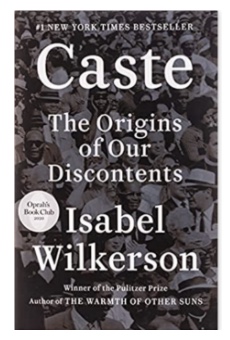 Caste: The Origins of our Discontent by Isabel Wilkerson
Caste: The Origins of our Discontent by Isabel Wilkerson
- How does the caste system influence people’s lives and behavior and the nation’s fate?
- What are the eight pillars that underlie caste systems across civilizations, including a divine will, bloodlines, and stigma?
I’m reading and learning more and will continue to share and do more myself to make change happen so we can prosper together.
Thank you for reading, and please share this with your friends!
I welcome your comments and would appreciate
any claps on this post which is also on Medium
Barbara Bray @bbray27


